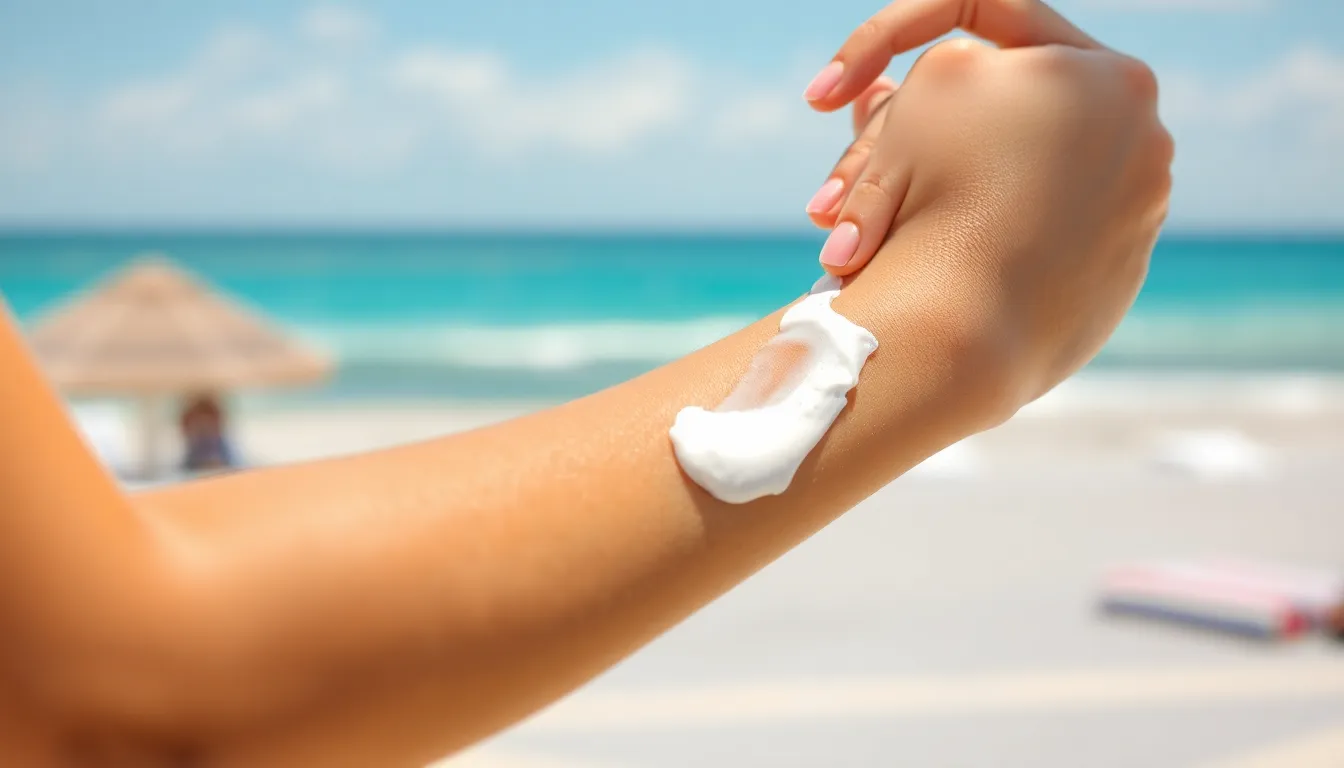Sunscreen is like that trusty umbrella you never knew you needed until the rain starts pouring. But what happens when it comes to the magical ingredient mitacium dizovid? This isn’t just another fancy name thrown around in the skincare aisle. Understanding how much of this powerhouse ingredient you need can mean the difference between a sun-kissed glow and looking like a lobster after a beach day.
Understanding Mitacium Dizovid
Mitacium dizovid plays a crucial role in sunscreen formulations. This active ingredient enhances UV protection while offering additional skincare benefits.
What Is Mitacium Dizovid?
Mitacium dizovid is a broad-spectrum UV filter that absorbs and reflects harmful sun rays. Its inclusion in sunscreens provides a protective barrier against UVA and UVB radiation. Formulators appreciate its ability to enhance product stability and skin compatibility. This ingredient is particularly favored in various lotions and creams for its lightweight feel and non-greasy application.
Benefits of Mitacium Dizovid in Sunscreen
Mitacium dizovid offers multiple advantages when included in sunscreen products. It effectively prevents sunburn, lowering the risk of skin damage. Additionally, it helps maintain skin hydration, promoting a healthier appearance. Users often notice improved skin texture due to the ingredient’s soothing properties. UV protection extends beyond immediate effects, as regular application supports long-term skin health.
Recommended Dosage of Mitacium Dizovid

Determining the right dosage of mitacium dizovid is crucial for maximizing sunscreen effectiveness. Factors such as skin type, sun exposure duration, and product formulation impact the amount needed.
Factors Influencing Dosage
Skin type plays a significant role in dosage requirements. Oily skin may require a lower concentration of mitacium dizovid, while dry skin could benefit from higher levels for added hydration. Additionally, people who engage in outdoor activities or swim frequently may need increased amounts to maintain protection. Sunscreen product formulation affects how well mitacium dizovid functions, influencing whether it’s effective in lower or higher concentrations. The UV index in the environment also influences dosage; a higher index suggests a stronger need for adequate sun protection.
Dosage Guidelines by Experts
Experts recommend using at least 2% mitacium dizovid in sunscreen formulations for optimal protection. This concentration effectively shields against UVA and UVB rays while maintaining skin health. Manufacturers might suggest adjustments based on specific environmental factors, with higher levels recommended for areas with intense sun exposure. Following the manufacturer’s guidelines ensures effective dosing, supporting the sunscreen’s overall protective capabilities. Regular reapplication every two hours strengthens protection, especially during extended outdoor exposure.
Application Tips for Sunscreen with Mitacium Dizovid
Using sunscreen with mitacium dizovid involves specific techniques and timing for maximum effectiveness. Proper application ensures optimal protection against harmful UV rays.
Proper Application Techniques
Apply sunscreen generously to all exposed skin. Starting with a quarter-sized amount for the face provides a good base. Use fingers to spread the product evenly, avoiding missed areas. Ensure that the application covers the neck and ears for comprehensive protection. When using sprays, apply until a visible sheen appears on the skin. Wait for the product to dry for a few minutes before dressing to avoid clothing transfer. Following these techniques enhances absorption and maintains skin hydration, benefiting from mitacium dizovid’s properties.
Reapplication Frequency
Reapply sunscreen every two hours for continuous protection. Increased sun exposure and activities like swimming necessitate more frequent touch-ups. Consider applying additional sunscreen after heavy sweating or towel drying. Individuals engaging in outdoor sports may find themselves needing to reapply even more often to maintain protection levels. Consistent reapplication maximizes the efficacy of mitacium dizovid, ensuring skin remains shielded from UV damage throughout the day.
Potential Side Effects
Mitacium dizovid in sunscreen may cause side effects in some individuals. Awareness of these reactions can help ensure safe use and improve overall skin health.
Common Side Effects
Redness and irritation may occur after applying products containing mitacium dizovid. Allergic reactions such as itching or rashes can develop in sensitive skin types. Stinging sensations sometimes accompany application, especially on recently shaved or sensitive areas. While most side effects are mild, persistent reactions warrant attention. Users should conduct a patch test before full application to identify any potential issues.
When to Consult a Doctor
Consulting a doctor becomes essential if severe side effects arise after using sunscreen with mitacium dizovid. Signs such as swelling, extreme itching, or blistering demand immediate medical attention. If irritation persists and does not improve after discontinuing use, seeking professional advice is crucial. Additionally, anyone experiencing unusual skin reactions should not hesitate to reach out to a healthcare provider for guidance. Early intervention can help prevent further complications and ensure skin health.
Final
Mitacium dizovid plays a vital role in enhancing sunscreen effectiveness and overall skin health. Its ability to absorb and reflect harmful UV rays makes it an essential ingredient for anyone looking to protect their skin from sun damage. Using the recommended dosage of at least 2% ensures optimal protection while considering individual skin types and exposure levels.
Proper application techniques and regular reapplication are crucial for maintaining the benefits of mitacium dizovid. By following these guidelines, individuals can enjoy the outdoors safely, knowing their skin is well-protected. Awareness of potential side effects and the importance of patch testing further supports a safe and effective sunscreen experience. Prioritizing skin health with the right sunscreen formulation can lead to a healthier and more radiant complexion.
